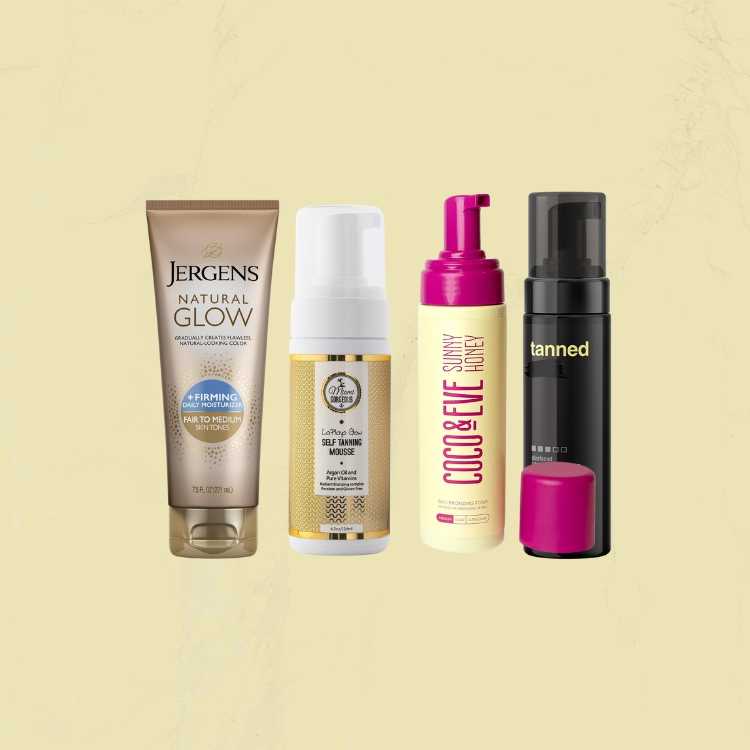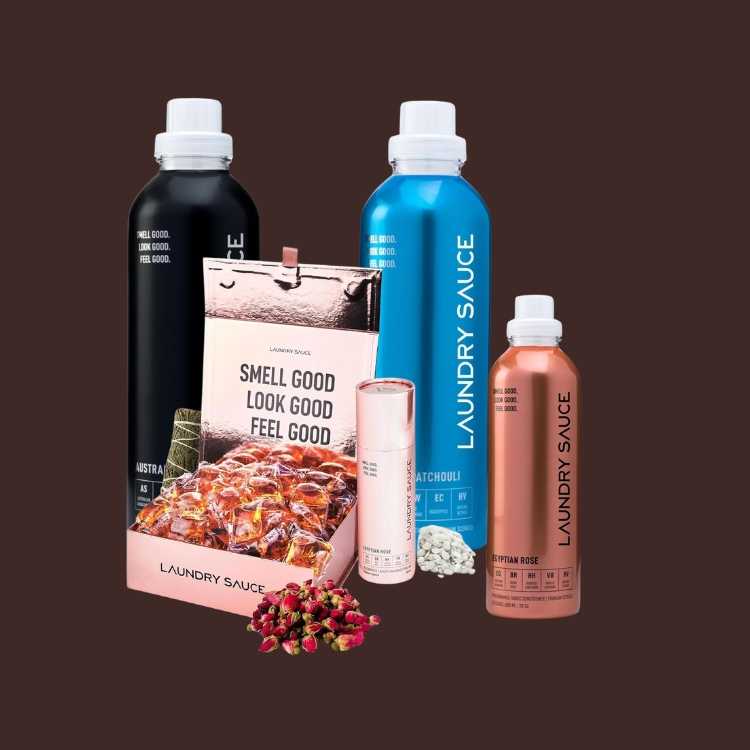You must be feeling on top of the world as, after long nine months, your baby is finally here! And as you face this exciting new chapter of your life, you’re probably facing many new challenges—sleepless nights, stress, and skin woes that come along with these.
However, just as while you were pregnant, you should still be cautious about what you put on your body if you plan to breastfeed and choose skincare that’s safe for your newborn.
The good news is that nursing moms have a few extra options compared to pregnant women. This is simply because the baby is a lot bigger by now, the organs are almost fully developed, and your body is better at filtering out all the ingredients that shouldn’t be in the breast milk.
So, here’s a summary of what skincare ingredients you should avoid while breastfeeding as well as some tips for an effective and breastfeeding-friendly skin care for those rare moments you can steal for pampering yourself.
Skincare Ingredients to Avoid While Breastfeeding
When breastfeeding, be mindful of those skincare ingredients which might be absorbed through your skin, into your bloodstream, and finally, into the milk, potentially harming your baby. However, the caution doesn’t end there. You also need to be aware of the direct skin contact between you and your child and avoid using products that are potential irritants for your newborn’s sensitive skin.
So, here’s a quick list of skincare ingredients you might want to avoid while breastfeeding:
1. Retinoids
During pregnancy, your health care provider undoubtedly advised avoiding the use of any topical Retinoids. This is due to retinoid embryopathy or congenital disabilities associated with topical application of tretinoin in pregnant women. Tretinoin is the most potent form of retinoic acid, essentially a vitamin A derivative often used in skin care to fight acne and reduce the signs of skin aging.
Unfortunately, besides tretinoin, other weaker forms of retinoic acid (such as retinaldehyde, retinol, adapalene, tazarotene, and retinyl palmitate) are also a no-go in postpartum skincare. This is because vitamin A is an integral part of breast milk, causing a general concern that topical application of this ingredient can lead to higher concentrations of vitamin A in mother’s milk.
Even though the amount absorbed into the bloodstream is meager, many dermatologists, pediatricians, and OB/GYNs still advise against using retinoids while nursing.
So, while you might have to temporarily hit the brakes on your favorite anti-aging skincare ingredient, your fight against wrinkles and fine lines doesn’t have to end—search for natural alternatives to tretinoin, such as bakuchiol and rosehip oil, instead.
2. Salicylic Acid
Salicylic acid is a beta hydroxy acid or BHA for short. It’s a mild exfoliant that helps with skin redness, inflammation, and acne. While you may use face washes and cleansers with low salicylic acid concentration (around 2 – 3%) while breastfeeding, you should avoid those products with a higher salicylic acid content, especially leave-on products.
Research suggests that topical salicylates are easily absorbed by the skin and can potentially get into breast milk. Salicylates are very similar to aspirin but create exposures and toxicity risks much more significant than those with baby aspirin. Therefore, if your baby ingests it through the milk, it could lead to aspirin-like toxicity.
Consequently, if you’re struggling with acne, you can use over-the-counter acne cleansers with low salicylic acid concentrations, up to 3%. Still, be mindful not to apply it to your chest or breasts, or any other part of the body your baby has direct contact with.
3. Hydroquinone
Another common skin woe that usually occurs during pregnancy and several months after delivery is melasma and hyperpigmentation. Melasma is often characterized by dark brown skin patches, typically on the cheeks, forehead, and sometimes, forearms. So naturally, if you want to eliminate these dark patches, you would reach for skincare products containing skin-whitening agents, such as hydroquinone.
However, hydroquinone is a water-soluble ingredient and is readily absorbed by the body following topical application. For this reason, doctors recommend avoiding it during pregnancy as well as breastfeeding. Instead, you can use kojic acid, azelaic acid, or vitamin C to fight melasma.
4. Chemical UV Filters
Sunscreen is a must in any skincare routine. Chronic exposure to the harmful UVA and UVB rays leads to many skin problems, including premature skin aging and even malignant melanoma, a type of skin cancer. Therefore, sunscreen is your No.1 ally in sun protection, and you should wear it throughout the year.
However, studies show that certain UV filters in chemical sunscreens, such as octocrylene and 4-methyl benzylidene camphor, can reach breast milk. For this reason, nursing mothers are usually advised to avoid chemical sunscreens and use mineral sunscreens instead. Mineral sunscreens, also called physical sunscreens or sunblocks, typically contain zinc oxide and titanium dioxide, which are safe during breastfeeding.
5. Essential Oils
Essential oils are scented compounds extracted from various plants and can often be found in skincare products because of their antioxidant and anti-aging properties. Some of the most common essential oils in skincare are tea tree oil, carrot seed oil, rosemary oil, lavender, bergamot, and others.
Even though they can benefit the skin in many ways, these oils are volatile, complex compounds, usually containing various skin irritants, such as citronellol, limonene, linalool, and eugenol, to name a few.
These ingredients are the ones that give the essential oil its fragrance, but at the same time, they can damage and irritate the skin. Some of the most common skin reactions to topical essential oils are itchiness, contact dermatitis, allergies, swelling, redness, and dryness.
Keeping in mind that your baby’s skin is brand new, exposing it so such strong irritants will inevitably cause adverse reactions. Therefore, it would be best to avoid using them while nursing.
6. Other Ingredients
Besides skincare, other personal care products contain potentially harmful chemicals for your infant. Those include:
Fragrance: Just like essential oils, perfumes contain highly volatile compounds, like phthalates. These compounds can irritate sensitive skin, especially when used daily, causing allergic reactions, burning, and rashes. Besides, phthalates are known to cause endocrine disruption and respiratory issues;
Self-tanners: Most self-tanning creams and lotions contain the color additive DHA, or dihydroxyacetone, as the main active ingredients. This ingredient interacts with the top layer of the skin, causing a chemical reaction that produces pigment. And since it stays on the surface of your skin, there’s a high likelihood that your baby will ingest it while breastfeeding. As a result, it would be best to avoid using a self-tanning agent on your breasts and chest, or use it with a cream barrier to cover your nipple area;
Honey: The all-natural, all-purpose ingredient with numerous skin benefits is honey—often used in skincare as a part of DIY face masks or as a stand-alone ingredient. However, if ingested, honey can cause infant botulism in babies younger than one-year-old. Infant botulism is caused by a toxic form of certain bacteria often found in honey, called Clostridium botulinum. Babies with this illness can have trouble breathing, muscle weakness, and a weak cry and need to be hospitalized.
Skincare Tips for Nursing Moms
With this huge new responsibility and the many challenges ahead, your whole life will change. You may find yourself not sleeping enough and feeling more anxious, which will inevitably show on your complexion. Your skin will become more brittle, dry, and prone to irritation and breaking out.
But with the new baby, you won’t have as much time for yourself. That’s why your skincare routine needs to be quick and simple but effective. Here are a few simple tips and tricks for postpartum skin care to get your glow back:
#1: Use Gentle, Non-Foaming Cleansers
Look for gentle face cleansers as these won’t strip your skin of oils and make it even drier. If you notice your skin is squeaky clean and uncomfortably tight after cleansing, it’s a good indicator that the product you’re using is too harsh for your skin. Your skin should feel clean but also supple after cleansing.
So, go for non-foaming face washes and cleansers, as these usually tend to be gentler on the skin. Also, try to avoid fragranced cleansers that contain alcohol or essential oils.
#2: Keep Your Skin Hydrated
Lack of sleep will make your skin more stressed out and dehydrated. That’s why keeping it hydrated from the inside and out is perhaps one of the most critical steps in your postpartum skincare.
So, seek out a bit richer creams and moisturizers with strong emollient and hydrating ingredients, even if your skin is generally on the oilier side. But choose those labeled as non-comedogenic to avoid clogged pores and more breakouts.
Your skin will love ingredients such as squalane, jojoba oil, shea butter, ceramides, hyaluronic acid, and glycerin. In addition, try to drink enough water throughout the day.
#3: Use Gentle Exfoliants
Exfoliating is the go-to skincare step if you seek to regain your dewiness and improve your skin’s texture. Using a gentle chemical exfoliant once or twice a week will already make a huge difference.
You can start with a lower concentration (about 5%) of azelaic acid or an AHA (such as glycolic or lactic acid) and slowly build your way up to higher concentrations (you can go up to 10 or 20%).
#4: Strengthen Your Skin’s Barrier Function
Keeping your skin well-nourished and hydrated and using gentle products are already excellent steps towards restoring your skin’s natural barrier function. However, if your skin continues to break out, dry out, and itch, you can treat yourself with a warm, but not too hot, oatmeal bath.
All you need is ground-rolled oats, without sugars or additives, and, of course, a bathtub. A simple oatmeal bath once or twice a week will do the trick–you can even take it with your little one and have some extra snuggles and bonding time.
#5: Keep Acne at Bay
If you keep getting new spots and breakouts, you can use a benzoyl peroxide-based cleanser in the evening. It will effectively destroy acne-causing bacteria and unclog the pores, preventing any new spots.
However, as it can be a bit drying, be particularly diligent with your moisturizing routine that night. After applying your moisturizer, you can seal the deal with coconut oil or argan oil to lock all that hydration in.
Skincare Ingredients for Nursing Moms: Final Thoughts
Skin-to-skin contact is essential for your baby’s wellbeing. Therefore, breastfeeding or not, try to be mindful of what you put on your body, especially on your chest, breasts, neck, and arms. Just to stay on the safe side, steer clear of the above-listed skincare ingredients when nursing. If you want to introduce a new skincare product, discuss it with your health care provider and always keep track of how your baby’s skin reacts to it.
Elisha Philip











